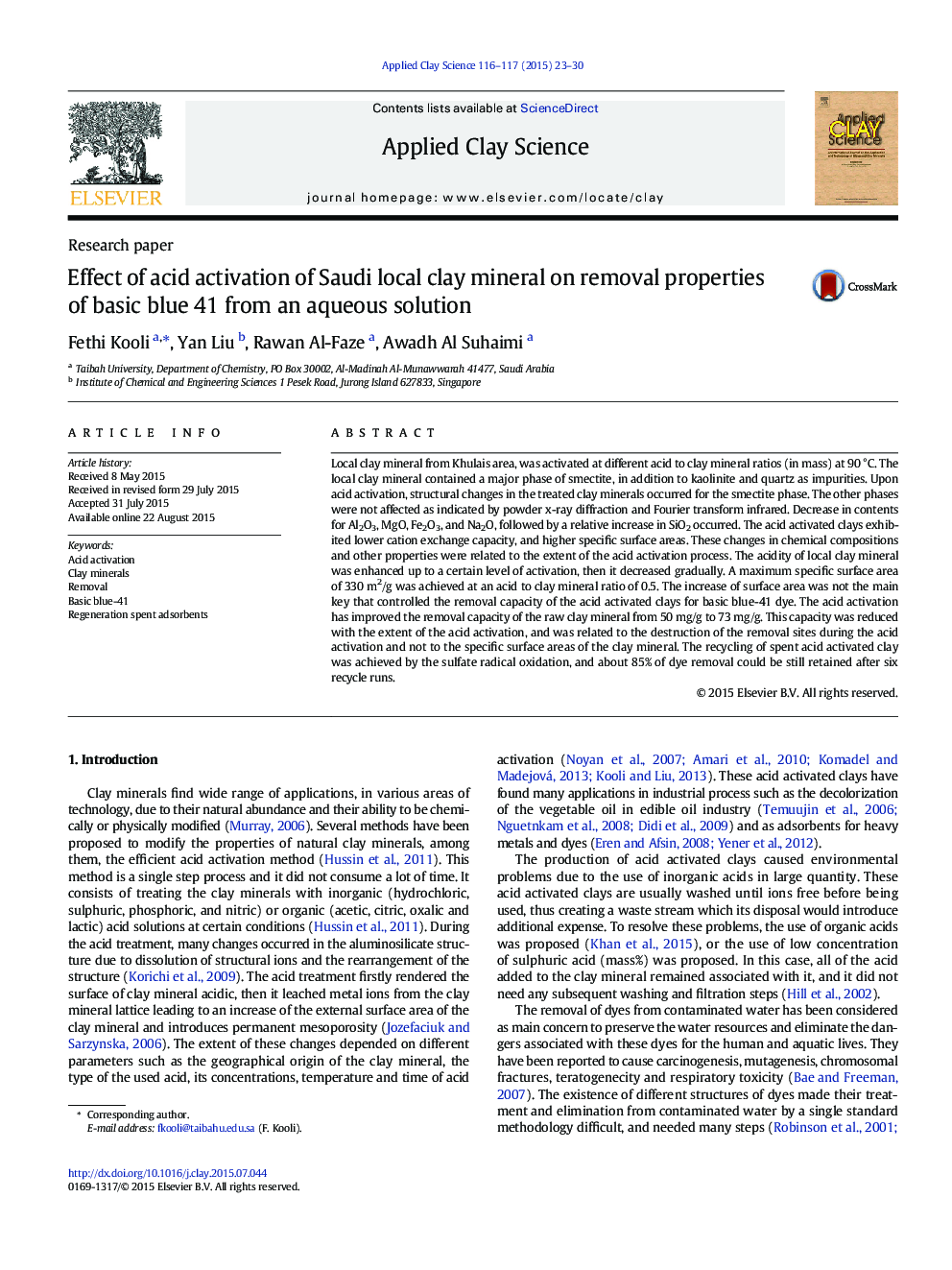| کد مقاله | کد نشریه | سال انتشار | مقاله انگلیسی | نسخه تمام متن |
|---|---|---|---|---|
| 1694459 | 1519065 | 2015 | 8 صفحه PDF | دانلود رایگان |
• Specific surface area of acid activated clays was enhanced up to five folders compared to raw clay.
• Acidity was improved up to a certain level of acid activation then it decreased.
• Removal of basic blue 41 was improved by acid activated clays at mild conditions.
• Removed amount of dye was related to surface acidity and not to specific surface area.
• Around 80% of dye removal can still be retained after six recycles of regeneration.
Local clay mineral from Khulais area, was activated at different acid to clay mineral ratios (in mass) at 90 °C. The local clay mineral contained a major phase of smectite, in addition to kaolinite and quartz as impurities. Upon acid activation, structural changes in the treated clay minerals occurred for the smectite phase. The other phases were not affected as indicated by powder x-ray diffraction and Fourier transform infrared. Decrease in contents for Al2O3, MgO, Fe2O3, and Na2O, followed by a relative increase in SiO2 occurred. The acid activated clays exhibited lower cation exchange capacity, and higher specific surface areas. These changes in chemical compositions and other properties were related to the extent of the acid activation process. The acidity of local clay mineral was enhanced up to a certain level of activation, then it decreased gradually. A maximum specific surface area of 330 m2/g was achieved at an acid to clay mineral ratio of 0.5. The increase of surface area was not the main key that controlled the removal capacity of the acid activated clays for basic blue-41 dye. The acid activation has improved the removal capacity of the raw clay mineral from 50 mg/g to 73 mg/g. This capacity was reduced with the extent of the acid activation, and was related to the destruction of the removal sites during the acid activation and not to the specific surface areas of the clay mineral. The recycling of spent acid activated clay was achieved by the sulfate radical oxidation, and about 85% of dye removal could be still retained after six recycle runs.
Journal: Applied Clay Science - Volumes 116–117, November 2015, Pages 23–30
